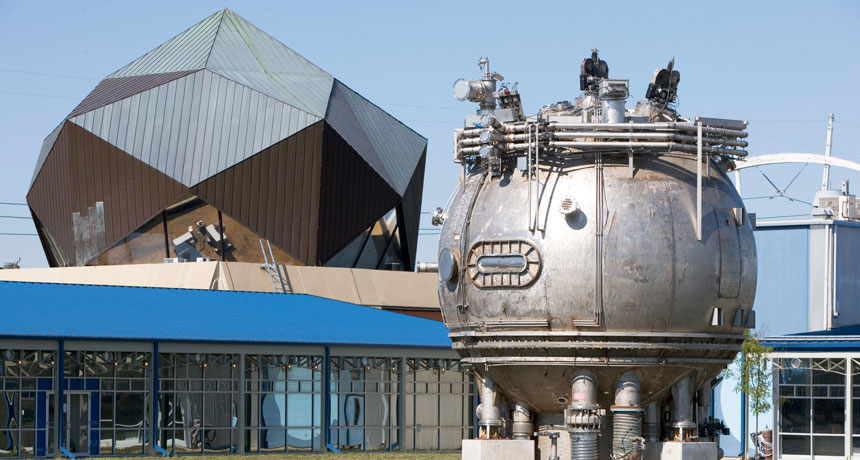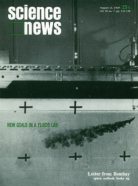50 years ago, Fermilab turned to bubbles
Excerpt from the August 16, 1969 issue of Science News

BUBBLY PAST This futuristic, metal ball was Fermilab’s 4.5-meter bubble chamber. Decommissioned in 1988, it’s now a prominent art piece called the Bubble Chamber Sculpture at the laboratory.
Reidar Hahn/Fermilab
